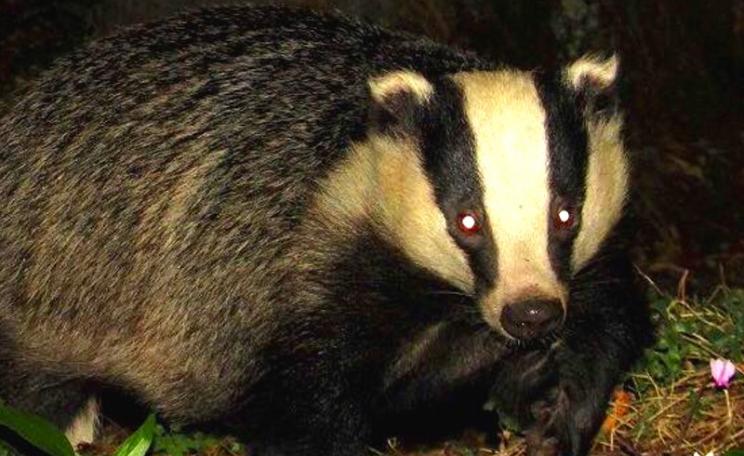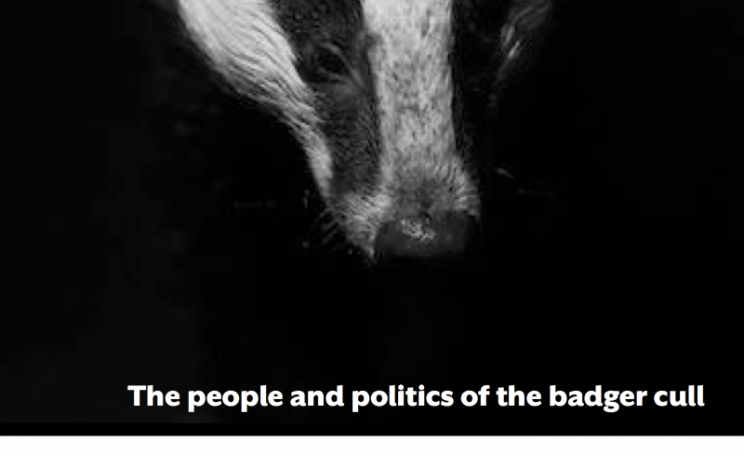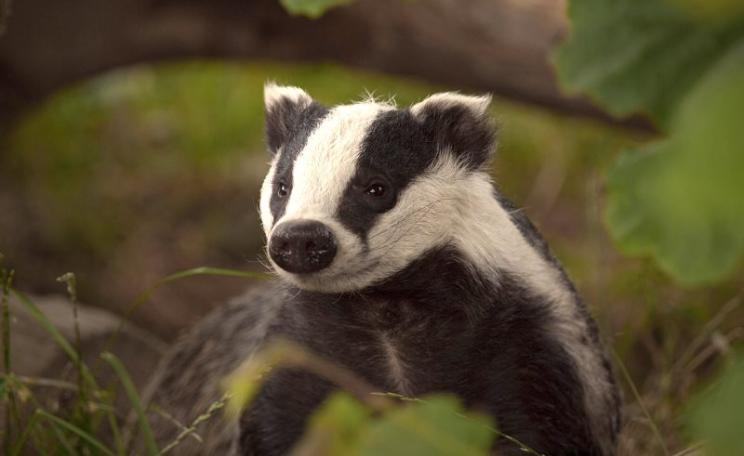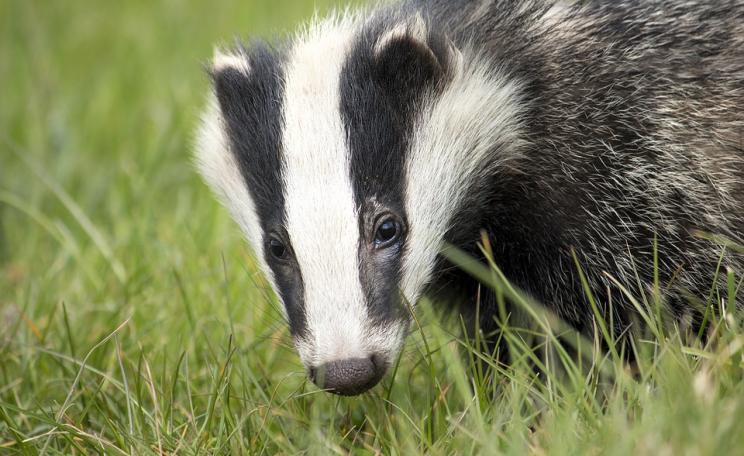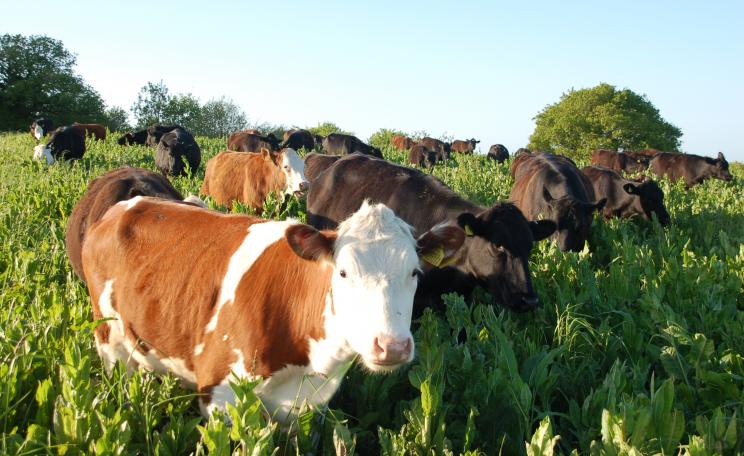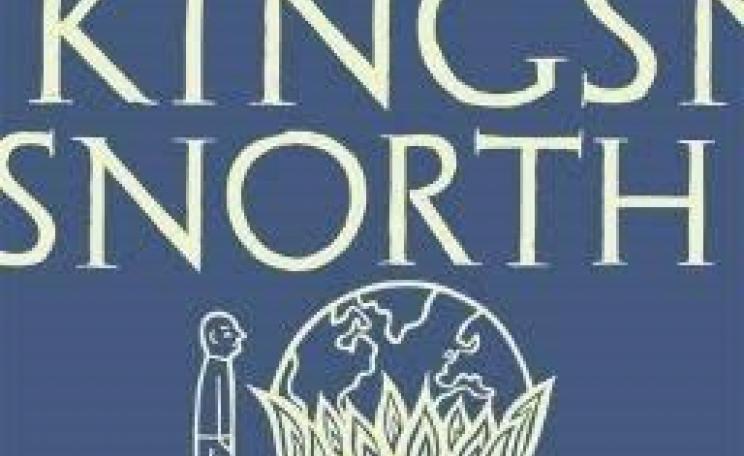Paterson insists we have a serious problem with disease among the badgers, but we have no figures to even begin to support that claim:
The UK Environment Secretary Owen Paterson does not believe in science. He prefers not to consult even his own chief scientific adviser on matters like climate change.
He doesn't believe in facts either, being notorious for coming out with and endlessly repeating statements that are not strictly true. Repeat something often enough and surely people will believe you - won't they?
He was at it again when making a statement to Parliament about his plans to carry on culling badgers, regardless of science, past failures, public opinion and an increasing number of anti-cull MPs demanding a vote on the matter.
'Lessons learned' - but not by Mr Paterson
The long-awaited report by the Independent Expert Panel (IEP) was finally published, although we all knew it had already judged the culls to be failures on two out of the three criteria set by the government.
Paterson ignored that and justified his decision to carry on the Somerset and Gloucester culls by saying "lessons had been learned". He had at least stopped pointing to the awful slaughter of badgers in Ireland as the prime example of how to rid a country of TB. Too many people now know that is a very red and inaccurate herring.
Instead he talked about Ireland, New Zealand, the US having to cull their wildlife, saying:
"The vital lesson I have taken from these countries is the importance of stringent cattle control measures in combination with tackling the primary wildlife reservoir."
A curious obsession with 'diseased badgers'
He kept pushing the idea of a reservoir of disease in the wildlife, talking again and again of "diseased badgers", "diseased wildlife", the "culling of diseased badgers" and "It is clear from the panel report that we need to perfect this particular method of removing diseased badgers before rolling out further."
He mentioned some of the badger vaccination programmes in operation or being set up, but at one point, answering a question from one MP, he implied that all badgers are diseased, and vaccinating them wouldn't make them healthy.
Well no, Mr Paterson, that's not how vaccination works. What he was trying to do was belittle the success Wales has had in reducing its level of TB - a drop of 48% in the number of cattle slaughtered since the introduction of strict controls in 2008, alongside a decision not to cull and the setting up of a badger vaccination programme, now in its third year.
Paterson insists we have a serious problem with disease among the badgers, but we have no figures to even begin to support that claim:
"As for Wales, I am delighted that there has been a reduction in the disease there. According to the farmers in Wales to whom I have spoken, it may be due to the spike that occurred when annual testing was introduced recently. Given that the vaccination trial has only been taking place for two years in 1.5% of the land in Wales, to attribute it to vaccination is laughable."
Indeed it is, and few people do. But it is an accusation thrown at the anti-cull people by Paterson and his chums, mostly because they don't want to face the fact that the one TB eradication strategy that works is annual testing for all cattle (not just in hot-spot areas as happens in England), with strict bio-security measures and tough cattle movement control.
Does Paterson even understand how vaccination works?
Vaccinating badgers protects badgers from being infected by cattle. But, oh dear, vaccinated badgers will leave nothing for the National Farmers Union to blame.
He emphasised his point: "Sadly, injecting diseased badgers in the hot-spot areas with cattle vaccine will not reduce the incidence of the disease."
Of course not. One vaccinates healthy badgers to prevent the spread of the disease among badgers. Healthy badgers can't infect cattle. And why talk about "cattle vaccine" when in his statement he admitted that:
"The option of using injectable badger vaccine has been available since 2010."
Oh, if only he could convince us that all the badgers are dying of TB anyway and the kindest thing to do would be to cull them all, then maybe we'd accept the lack of "humaneness" in their killing. Unfortunately for him, we will not forget that the IEP report said the culls had failed on humaneness.
Losing the plot a second time - on Radio 4
Having done his best with the MPs he then lost the plot later that day on the BBC Radio 4 PM programme. Being quizzed by Eddie Mair on the lack of humaneness he claimed that the report said that only a very small percentage had taken some time to die.
The criteria demanded that no more than 5% of the culled badgers should take more than 5 minutes to die. Beyond that the high level of pain experienced would be inhumane.
Mair pointed out that the report actually said that up to 22% of the badgers may have suffered like this. And Paterson came out with this gem:
"Out of 69 badgers, 68 pretty well died instantly but a number didn't."
And just in case we hadn't heard, he repeated it. How many "numbers" Mr Paterson can get out of the remaining single badger is almost impossible to compute unless you search the Animal Health & Veterinary Laboratories Agency report on monitoring humaneness for the number 69. It says:
"At the request of the IEP, an estimate of the distribution of TTD (time to death) was made which was based on only the 69 observations where the time between the first shot and final movement was observed. This may be considered to be an optimistic scenario where the distribution of TTD reflects only the best outcomes." (My emphasis)
To clarify ...
During the culling observers were sometimes present. With thermal imaging cameras they were able to record the time span between the rifles being fired (the first shot) and the final movements of the shot badgers. 68 badgers took up to 5 minutes to die, which is not "instant". Badger 69 took around 13 minutes to die.
There were a further 19 observed first shots where the badgers' final movements were not timed because the badgers moved out of view of the observer. In some cases the bodies were found far enough away from where they had been shot to reasonably assume that they had taken some time to die.
It is worth adding here that several of the 158 badgers (both observed and unobserved) selected for autopsy had been shot more than once.
Paterson excused the humaneness failure thus: "You must remember you are trying to shoot a wild animal in difficult, rugged countryside, in the night, in difficult weather, and perfection sadly is impossible."
One would be forgiven for thinking the culls took place in the Peak District or Northumberland Moors in the depths of winter, not the kindly counties of Somerset and Gloucester in late summer and early autumn.
The Panel's report however was simply critical of the standards of marksmanship, field craft and the way some guns ignored the Best Practice rules they were meant to be operating by.
But was it humane?
Mair persisted: "From the badgers' point of view, was it humane?"
"If you are talking about the 68 badgers who died almost instantly, yes it was humane. If you are talking about the smaller number who took longer, it is clear that the Panel set a 5 minute threshold and they want us to improve on that."
Pressed on the fact that the culls failed on both humaneness and effectiveness and yet were going to continue with no independent oversight, Paterson said:
"You are ignoring the tens of thousands of badgers dying hideous deaths from tuberculosis ... "
And this is where Paterson quite deliberately leaves reality behind. He insists we have a serious problem with disease among the badgers, but we have no figures to even begin to support that claim:
- We do not know how many badgers there are.
- We do not know how many badgers carry latent (non-infectious) TB.
- We do know that, of the nearly 11,000 killed in the Randomised Badger Culling Trials, only 1.67% were in the late stages of disease and therefore infectious.
- We also know that in two years of the Welsh badger vaccination programme (carried out in a hotspot area for TB in cattle) no unhealthy badgers in a total of 2776 have been found, although some had minor injuries.
- And we know even less than we should because - astonishingly - none of the 158 culled badgers that were autopsied were tested for TB!
Owen Paterson is, as they say, a brick short of a load. Or a sandwich short of a picnic. Certainly he is a Minister short of a viable and honest policy for eradicating TB in our cattle.
Lesley Docksey is a freelance writer who contributes articles to The Ecologist and other news media with international reach on issues of war, peace, politics and the environment.
See her other articles for The Ecologist.


